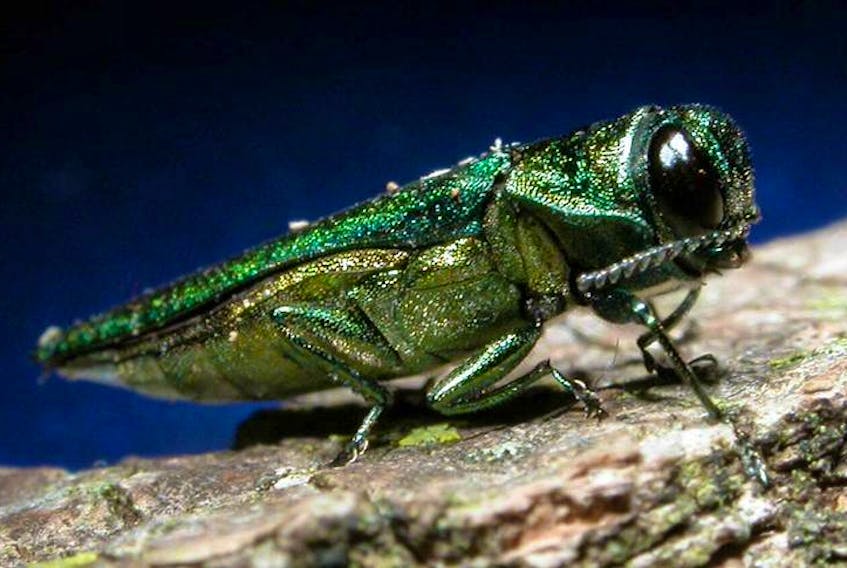Buy and burn local firewood is the Nature Conservancy of Canada’s top recommendation to deal with the arrival of an invasive tree-destroying beetle in the Maritime provinces.
With the new discovery of the emerald ash borer in Edmundston, N.B., the conservancy is urging the public to help reduce the impact of the destructive beetle on the province’s forests and nature reserves.
“The emerald ash borer is bad news for New Brunswick and Maritime forests. Now, more than ever, it is important to avoid giving these and other invasive bugs a ride by moving firewood around the province or region,” said Paula Noel, New Brunswick program director for the Nature Conservancy of Canada. “This summer, make sure you buy your camp firewood as close as possible to where you are going to burn it, and if you have some left over, leave it behind at your campsite or cottage.”
Emerald ash borer is a non-native, invasive beetle, originally from Asia, that is spreading rapidly and threatening forested areas throughout North America. It has done significant damage to ash trees in Ontario and Quebec and was discovered last December in Winnipeg.
Last fall, the International Union for Conservation of Nature (IUCN) added ash to its red list of threatened species.
“The emerald ash borer is expected to have a devastating impact on New Brunswick’s forests and wildlife habitat and potentially in P.E.I. and Nova Scotia as well, because ash is a common native species in this region,” said Noel.
Although woodpeckers, other birds and some insects will feed on emerald ash borer, there aren’t enough natural predators or diseases to help keep this invasive species at bay.
Signs and symptoms of emerald ash borer infection include general tree decline and loss of green colour in leaves, D-shaped exit holes and dieback in the tree crown.
Anyone whose ash trees look unhealthy should contact the Canadian Food Inspection Agency or the local municipality.









